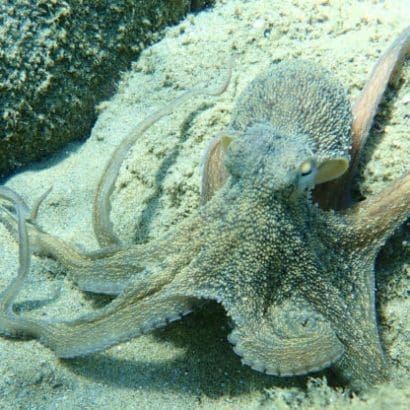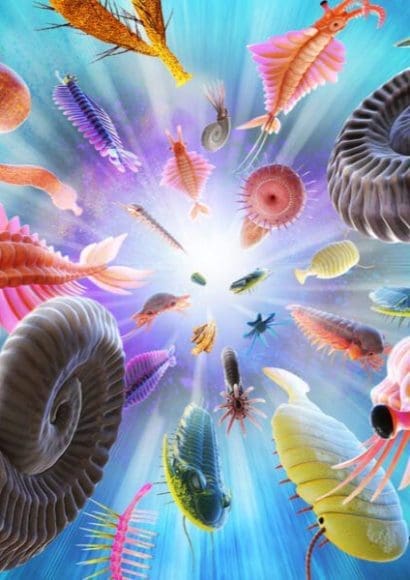
The world’s oceans are teeming with a remarkable array of marine life, ranging from majestic whales to microscopic organisms. Within this vast aquatic realm, there are certain regions that stand out as true hotspots of marine biodiversity. In this article, we will explore the location with the greatest marine biodiversity in the world and uncover the incredible ecosystems that harbor this astonishing variety of life.
From vibrant coral reefs to expansive coastal habitats, these regions boast an extraordinary richness of marine species. Understanding and protecting these areas is crucial for the conservation of our oceans and the preservation of their delicate ecological balance. Join us as we dive into the depths of this exceptional location and discover the wonders it holds beneath the surface.
Contents
Why is it crucial to preserve marine biodiversity?.
Preserving marine biodiversity is of utmost importance due to the following reasons:
Ecosystem Stability:
Marine biodiversity plays a vital role in maintaining the overall health and stability of marine ecosystems. Each species, no matter how small, contributes to the intricate web of interactions within the ecosystem. Removing or depleting any species can disrupt the balance and have cascading effects on the entire ecosystem. Preserving biodiversity ensures the resilience and sustainability of marine ecosystems.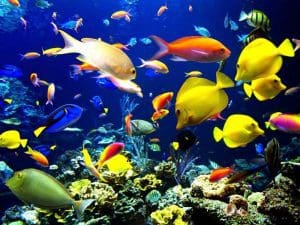
Economic Value:
The ocean is a valuable resource that provides numerous economic benefits. Fisheries, aquaculture, and tourism industries heavily rely on healthy and diverse marine ecosystems. Preserving marine biodiversity ensures the long-term viability of these industries, which in turn contributes to economic growth, employment opportunities, and food security for millions of people around the world.
Climate Regulation:
Marine biodiversity plays a crucial role in regulating the Earth’s climate. Ocean ecosystems, particularly coastal habitats like mangroves, salt marshes, and seagrass beds, act as carbon sinks, absorbing and storing vast amounts of carbon dioxide. Additionally, marine organisms, such as phytoplankton, contribute to the production of oxygen through photosynthesis. Preserving marine biodiversity helps mitigate climate change by sequestering carbon and maintaining oxygen levels.
Medicinal Potential:
The ocean is a vast reservoir of potential medicines. Marine organisms have shown immense promise in providing new compounds for the development of pharmaceuticals, including treatments for cancer, bacterial infections, and other diseases. Preserving marine biodiversity ensures the continued exploration of these potential medical breakthroughs, benefiting human health and well-being.
Cultural and Aesthetic Value:
The ocean holds significant cultural and aesthetic value for communities around the world. Marine ecosystems and the species they harbor are deeply intertwined with cultural practices, traditions, and spiritual beliefs. Preserving marine biodiversity allows future generations to appreciate and connect with the beauty and diversity of marine life, fostering a sense of wonder and environmental stewardship.
Biodiversity Conservation:
Preserving marine biodiversity is interconnected with the conservation of global biodiversity as a whole. Many species have complex life cycles that involve both marine and terrestrial habitats. Protecting marine ecosystems ensures the survival of species that rely on both marine and terrestrial environments, contributing to the overall preservation of Earth’s biodiversity.
Factors that influence marine biodiversity:
Marine biodiversity, the variety of species and ecosystems found in the ocean, is influenced by a range of factors. These factors interact and shape the distribution and abundance of marine life. Understanding these influences is essential for assessing and managing marine ecosystems effectively. Here are some key factors that influence marine biodiversity:
Physical Factors:
Physical factors such as temperature, salinity, water movement, and light availability play a significant role in determining the distribution and survival of marine organisms. Different species have specific temperature and salinity requirements, and variations in these factors can limit or promote the presence of certain species. Ocean currents and tides also influence the movement of organisms, dispersal of larvae, and nutrient transport, affecting biodiversity patterns.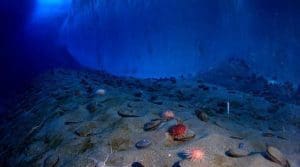
Nutrient Availability:
The availability of nutrients, particularly nitrogen, phosphorus, and iron, affects primary productivity in the ocean. Nutrient-rich areas, such as upwelling zones where deep, nutrient-rich waters rise to the surface, support high levels of productivity and, consequently, higher biodiversity. These areas become hotspots for marine life, attracting a diverse array of species from phytoplankton to large marine mammals.
Habitat Complexity:
The complexity and diversity of marine habitats contribute to higher biodiversity. Coral reefs, mangroves, seagrass beds, kelp forests, and rocky shores are examples of habitats that provide shelter, food, and breeding grounds for numerous species. The presence of diverse habitats within an ecosystem increases the overall biodiversity by offering niches and resources for different organisms.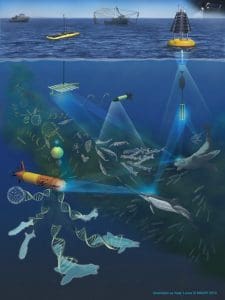
Oceanic Geographical Features:
Geographical features such as coastlines, islands, seamounts, and continental shelves can influence marine biodiversity. Coastal areas tend to have higher biodiversity due to the mixing of nutrient-rich coastal and offshore waters, as well as the presence of diverse habitats. Isolated islands can be hotspots of endemic species, unique to those specific locations. Seamounts, underwater mountains, also support a high abundance and diversity of marine life due to the upwelling of nutrient-rich water and the creation of unique habitats.
Human Impact:
Human activities have significant impacts on marine biodiversity. Overfishing, pollution, habitat destruction, and climate change all contribute to the loss and degradation of marine ecosystems. These activities can lead to the decline of certain species, disruption of food chains, and alteration of habitats, ultimately reducing overall biodiversity. Conservation efforts and sustainable management practices are crucial for mitigating these negative impacts and preserving marine biodiversity.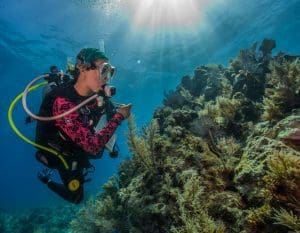
Prominent regions of marine biodiversity:
Prominent regions of marine biodiversity refer to specific areas in the world’s oceans that are known for their exceptional richness and diversity of marine life. These regions are characterized by unique environmental conditions, nutrient availability, and the presence of diverse habitats, which contribute to the abundance and variety of species. Exploring and understanding these prominent regions is crucial for conservation efforts and the preservation of marine biodiversity. Here is some general information about these significant areas:
Coral Triangle:
The Coral Triangle is a region located in the western Pacific Ocean, encompassing the waters of Indonesia, Malaysia, Papua New Guinea, the Philippines, the Solomon Islands, and Timor-Leste. It is renowned for its extraordinary marine biodiversity, particularly its vibrant coral reefs. The Coral Triangle is home to over 600 species of coral, which is more than 75% of the world’s known coral species. It also boasts a vast array of fish species, including numerous endemics and iconic species such as the clownfish.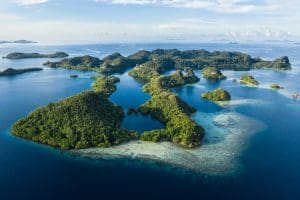
Great Barrier Reef:
The Great Barrier Reef, situated off the northeastern coast of Australia, is the world’s largest coral reef system. It stretches over 2,300 kilometers and is home to an astonishing diversity of marine life. The reef supports over 1,500 species of fish, 600 species of coral, and numerous other organisms. It is also a critical habitat for endangered species such as the dugong and the green sea turtle.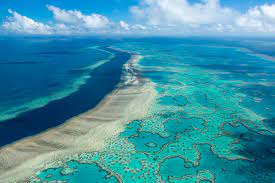
Galapagos Islands:
The Galapagos Islands, located in the eastern Pacific Ocean, are famous for their unique and endemic species. These volcanic islands serve as a natural laboratory for studying evolution and have played a significant role in shaping our understanding of biodiversity. The marine ecosystem surrounding the Galapagos Islands is teeming with an incredible variety of marine species, including marine iguanas, penguins, sea lions, and an impressive array of fish species.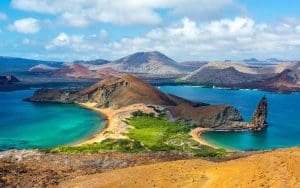
Gulf of California:
Also known as the Sea of Cortez, the Gulf of California is a narrow body of water separating the Baja California Peninsula from mainland Mexico. It is recognized as one of the most biologically diverse regions in the world. The Gulf of California supports a wide range of habitats, including coral reefs, mangroves, and seagrass beds, which provide a sanctuary for a vast array of marine species. It is particularly notable for its marine mammal diversity, with species such as whales, dolphins, and the critically endangered vaquita.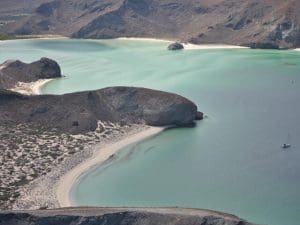
Western Indian Ocean:
The Western Indian Ocean region, encompassing coastal areas of East Africa, the Red Sea, and the Indian Ocean islands, is renowned for its high marine biodiversity. The region supports diverse coral reefs, seagrass meadows, and mangrove forests, which serve as critical habitats for numerous species. It is home to iconic marine creatures such as whale sharks, manta rays, and sea turtles.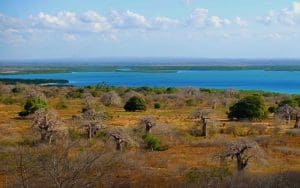
Iconic species.
Iconic species are those that capture the imagination and symbolize the natural heritage of a particular region or ecosystem. These species often have unique characteristics, captivating beauty, or significant ecological roles, making them representative and recognizable symbols of the natural world. They play a crucial role in conservation efforts, raising awareness about the importance of biodiversity and the need for its protection. Here is some general information about iconic species:
- Endangered Species: Many iconic species are unfortunately endangered or threatened due to factors such as habitat loss, poaching, pollution, and climate change. Examples of iconic endangered species include the giant panda, Bengal tiger, African elephant, and black rhinoceros. These species capture the public’s attention and serve as flagship species, raising awareness about broader conservation issues and the need for habitat preservation.
- Megafauna: Iconic species often include large animals that hold cultural and ecological significance. These megafauna species, such as whales, dolphins, elephants, lions, and polar bears, are easily recognizable and are considered symbols of their respective ecosystems. They play vital roles in maintaining ecosystem balance and biodiversity.
- Flagship Species: Flagship species are selected to represent an entire ecosystem or conservation initiative. They serve as charismatic ambassadors, attracting public attention and generating support for broader conservation efforts. For example, the giant panda is a flagship species for the conservation of bamboo forests and other species in China.
- Keystone Species: Some iconic species are considered keystone species, meaning their presence and ecological roles have a significant impact on the structure and functioning of their respective ecosystems. Examples include the beaver, which creates habitats through dam-building activities, and the coral, which forms the foundation of diverse coral reef ecosystems.
- Cultural Importance: Iconic species often hold cultural and spiritual significance for local communities. They are embedded in folklore, traditions, and indigenous knowledge, forming an integral part of cultural heritage. Protecting these species also helps preserve cultural identity and traditional practices.
- Ecotourism: Many iconic species drive ecotourism, attracting visitors who are eager to witness these remarkable creatures in their natural habitats. Ecotourism can provide economic incentives for conservation efforts, supporting local communities and raising awareness about the importance of protecting natural environments.
The importance of conservation:
In conclusion, the importance of conservation cannot be overstated. Conservation efforts are crucial for the preservation of our natural world and the well-being of both current and future generations. By conserving our ecosystems, we ensure the protection of biodiversity, which is essential for the stability and functioning of ecosystems.
Biodiversity provides us with invaluable ecosystem services, such as clean air and water, nutrient cycling, climate regulation, and pollination. Conservation also plays a vital role in maintaining the cultural and aesthetic value of our planet, preserving iconic species and their habitats that hold deep significance for communities around the world.
Conservation is not just about protecting individual species or habitats; it is about recognizing the intricate connections and interdependencies that exist within ecosystems. It is about understanding that every living organism has a role to play and that the loss of even a single species can have far-reaching consequences. By conserving biodiversity, we ensure the resilience and adaptability of ecosystems, making them better equipped to withstand environmental changes and disturbances.
If you’re curious about marine life and all its species, click here.


